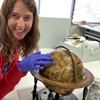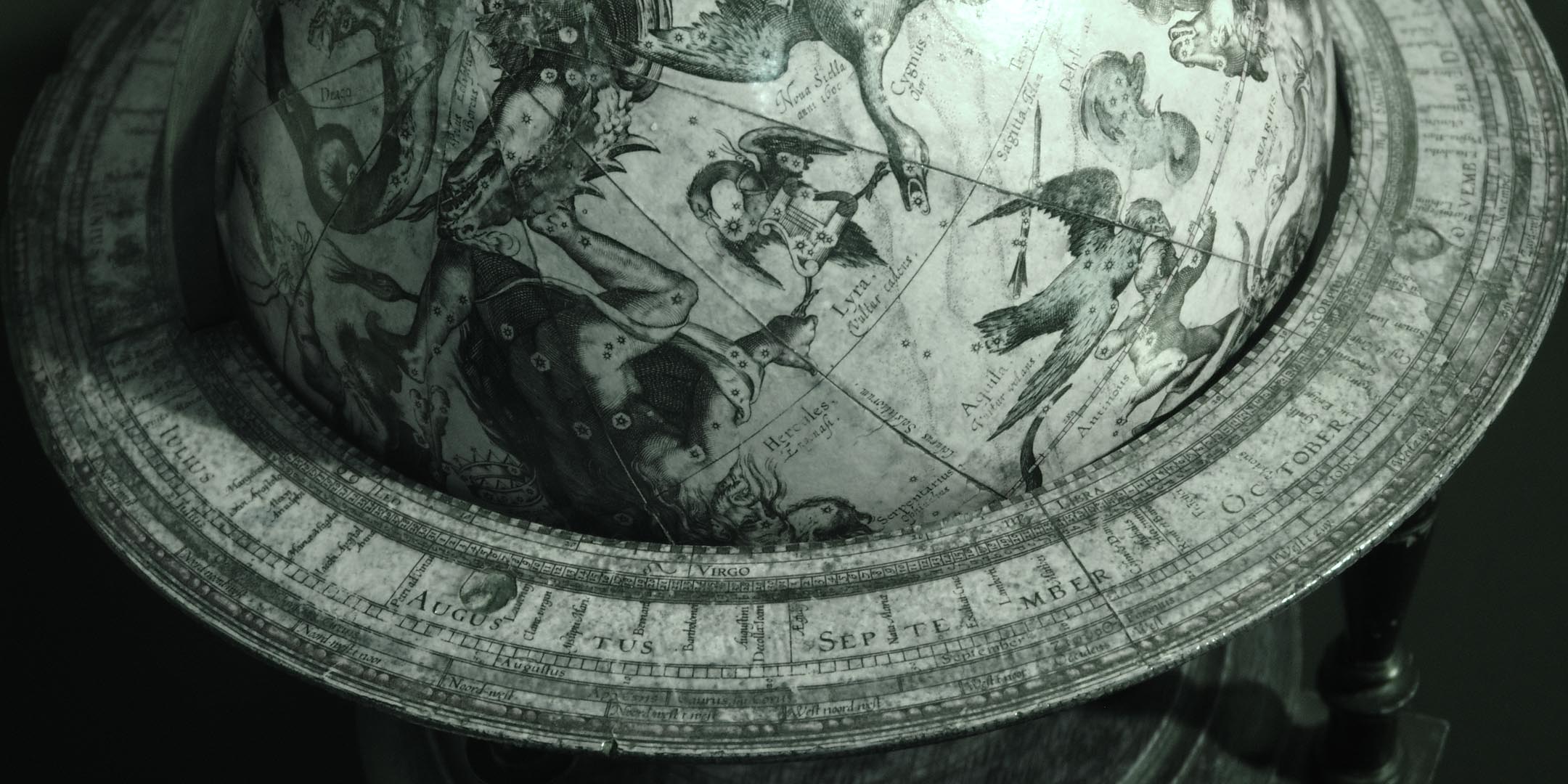
Object affection: The Blaeu Globe
One of the oldest items in the collection, the celestial Blaeu globe was made by renowned Dutch cartographer Willem Janszoon Blaeu in 1602. He was one of the first to make globes which included the constellations from south of the equator, such as the Southern Cross. It is one of only six known examples in the world. It abounds with birds, horses, mythical gods and creatures. The paper sphere rests in its original wooden stand, complete with a brass meridian.
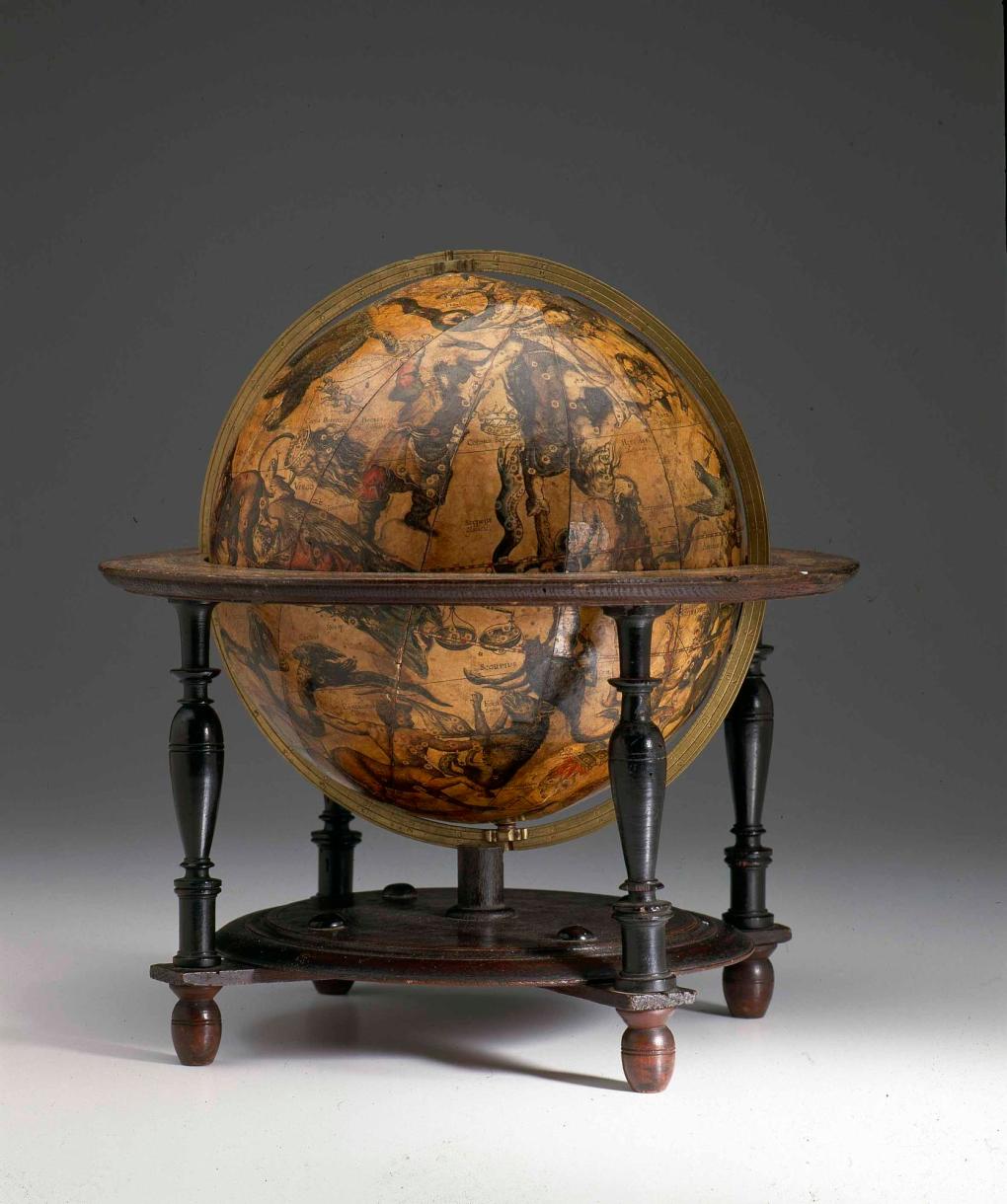
The Blaeu celestial globe. ANMM Collection 00005756.
Recently the conservation team carried out visual and photographic analysis to work out how this globe was made – and what has happened to it over the last 400 years…
How to make a globe, Blaeu style
There are many different parts to a globe and over the centuries, a diverse range of materials have been used to construct these spherical objects. However, from the 16th up until the 19th century, globes were manufactured with a consistent set of materials: a papier-mache shell was covered with a layer of plaster, which was smoothed using a template.
The outer layer of paper was printed with black ink and hand coloured with watercolours. The paper was cut into sections, known as gores, and adhered to the plaster surface. Some globes were then varnished for an added layer of protection.
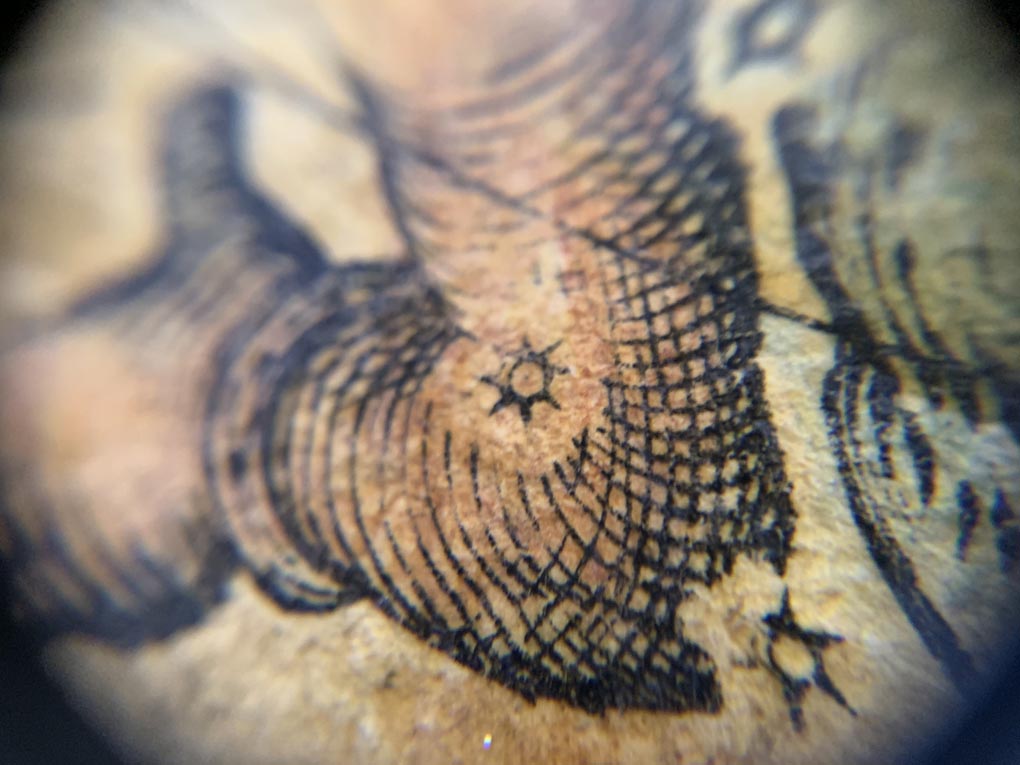
Closeup of the globe's watercolour and printing detail, with a macro lens. Image: Lucilla Ronai/ANMM.
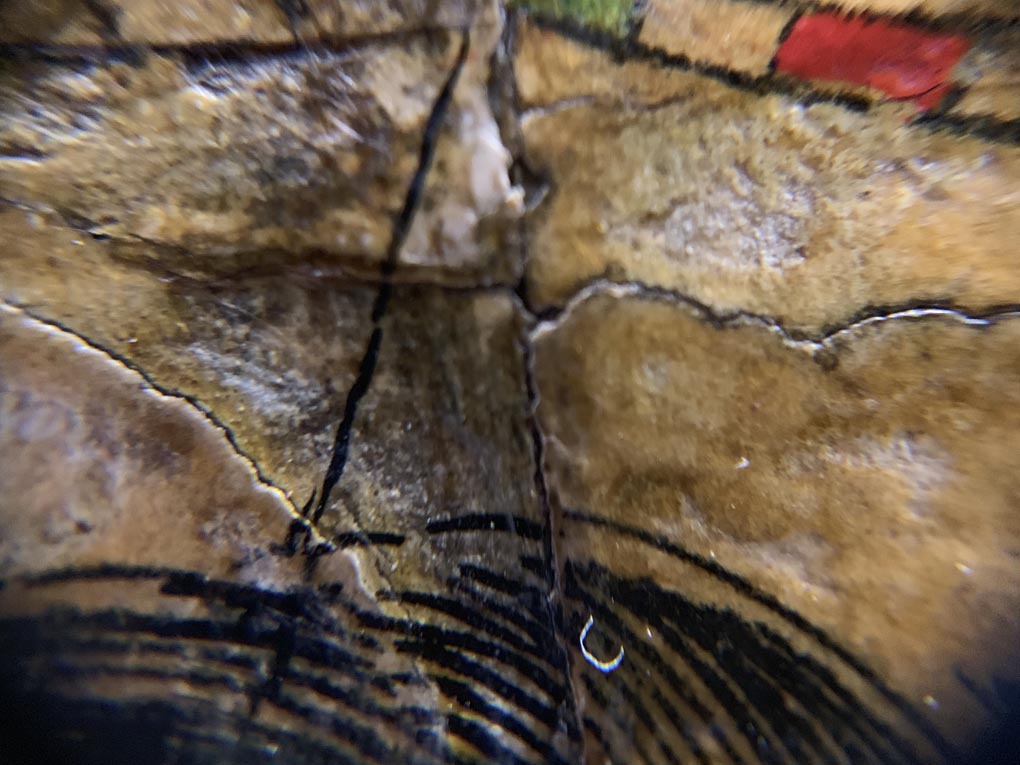
The macro photography allowed the team to document the cracks in the varnish and paper. Image: Lucilla Ronai/ANMM.
The stand and horizon band were made of wood, and the horizon band had paper on the top which was printed and coloured in the same way as the paper on the globe.
Taking a closer took, using ultra-violet and infa-red
On either side of the visible spectrum of light (400 – 700nm) sit ultra-violet (UV) and infa-red (IR). Some materials produce characteristic fluorescence when viewed under UV radiation which can assist with identification. UV is particularly useful for the identification of adhesives, varnishes and pigments, while IR makes carbon-based materials more visible, as they absorb IR radiation strongly.
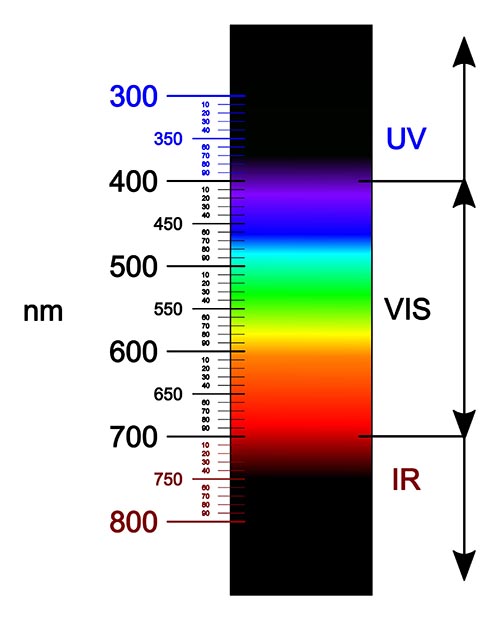
Visible spectrum of light. Image: Fulvio314 via Wikimedia.
UV results
When viewed under UV radiation, a number of different fluorescence were produced.
Some parts of the varnish fluoresced a bright green colour. This colour is often produced by natural resins and suggests either a mastic or dammar varnish may be present (Measday, Walker and Pemberton 2017). The areas of bright green fluorescence formed a mottled pattern, but the surrounding areas produced no fluorescence. This difference in fluorescence indicates more than one type of varnish has been applied to the globe.
The difference in fluorescence indicates more than one type of varnish has been applied to the globe.
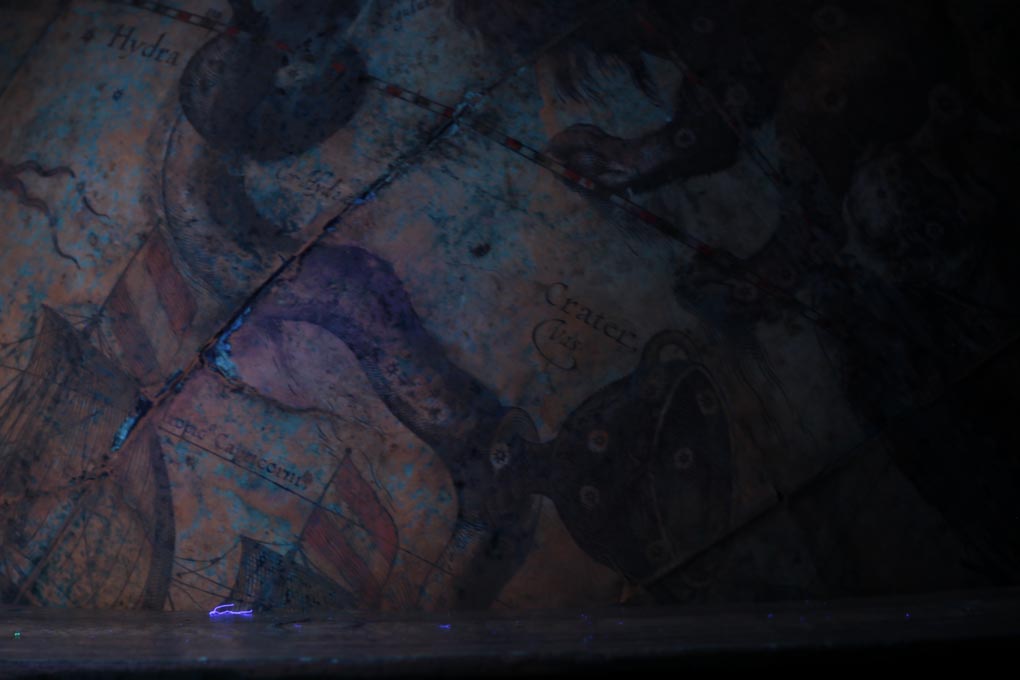
From the UV survey, we think the blue/green fluorescence is likely the plaster beneath the paper surface. Image: Katie Wood/ANMM.
Also visible in the centre of the photo above is some blue/green fluorescence, where the globe is damaged. This is most likely the plaster beneath the paper surface. On the underside of the horizon band there was some blue florescence (as seen in the image below). We think the adhesive used during repairs to this area produced this fluorescence.
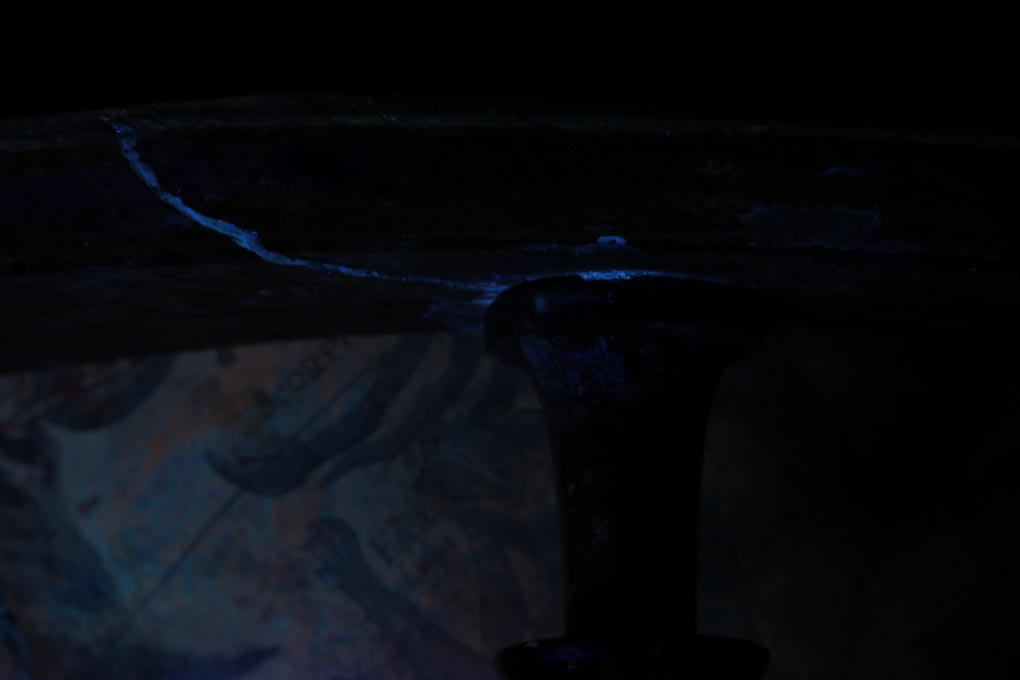
This fluorescence is presumed to indicate the presence of an adhesive to the underside of the horizon band. Image: Katie Wood/ANMM.
IR results
Remember that IR examination makes carbon-based materials stand out? Very handy for paper surfaces printed with black ink, such as the gores of the globe. The black ink is carbon-based and therefore renders clearly in the IR photos. Layers of dirt, grime, and discoloured varnish that obstruct the view under normal day light are no longer visible.
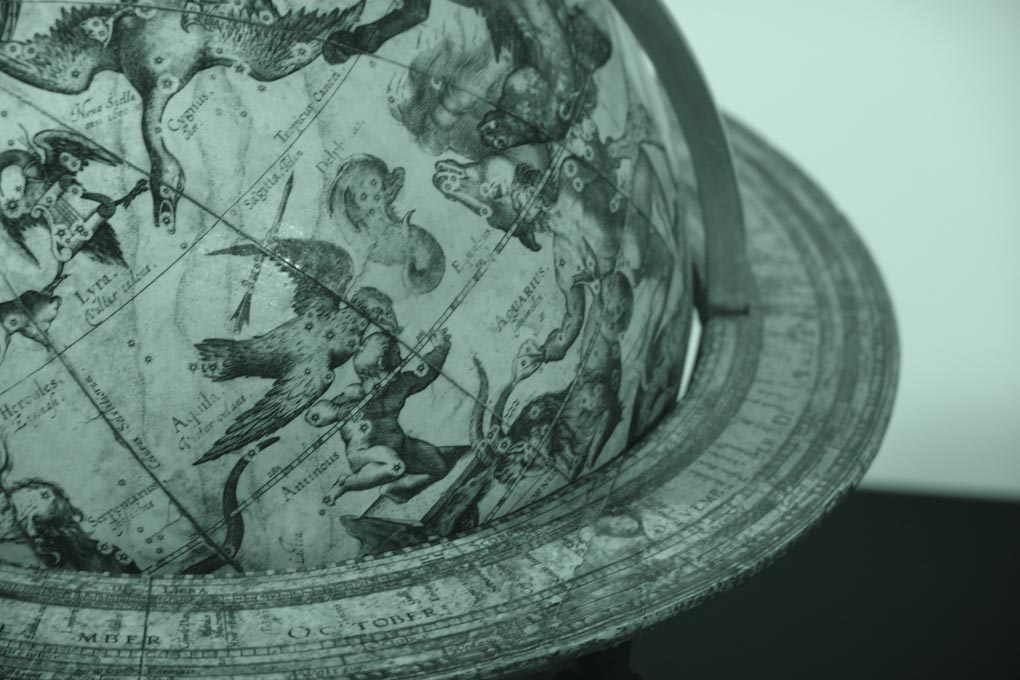
Viewing the globe using IR. ANMM Collection 00005756. Image: Katie Wood/ANMM.
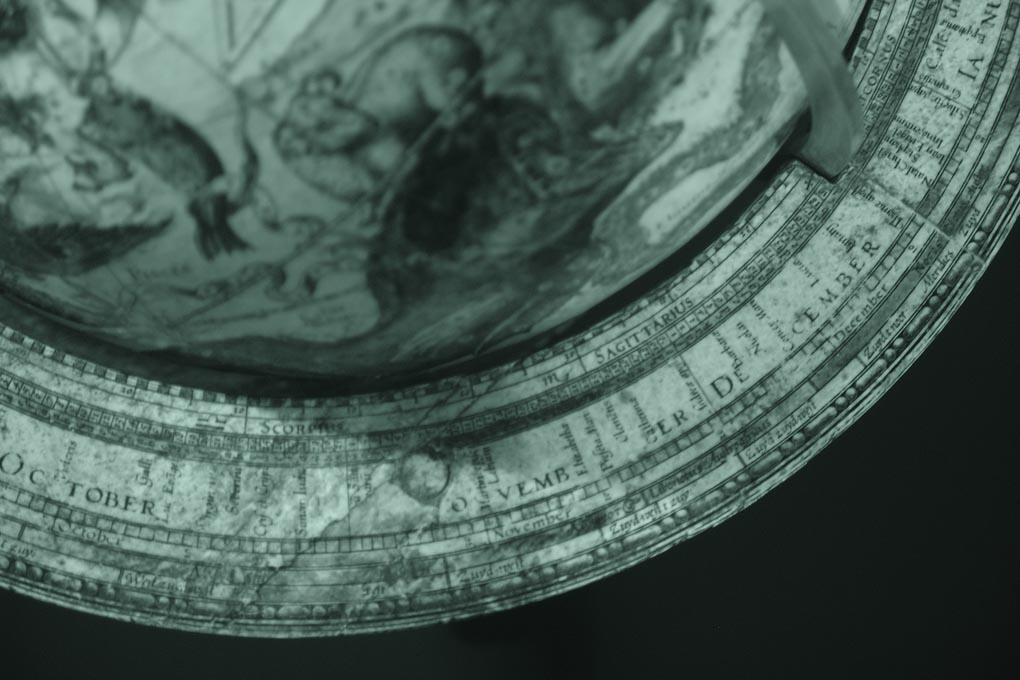
Closeup of horizon band from the IR survey. ANMM Collection 00005756. Image: Katie Wood/ANMM.
RTI results
Conservators also used the Reflectance Transformation Imaging (RTI) technique to get a better understanding of the condition of the Blaeu globe.
RTI is a fairly simple and inexpsensive technique that combines numerous (~48) photographs to create a computer model that is able to reveal fine surface details. RTI is great for identifying and documenting previous repairs and hidden inscriptions.
Our results show differences in textures due to the intaglio printing process and several areas of damage and repair.
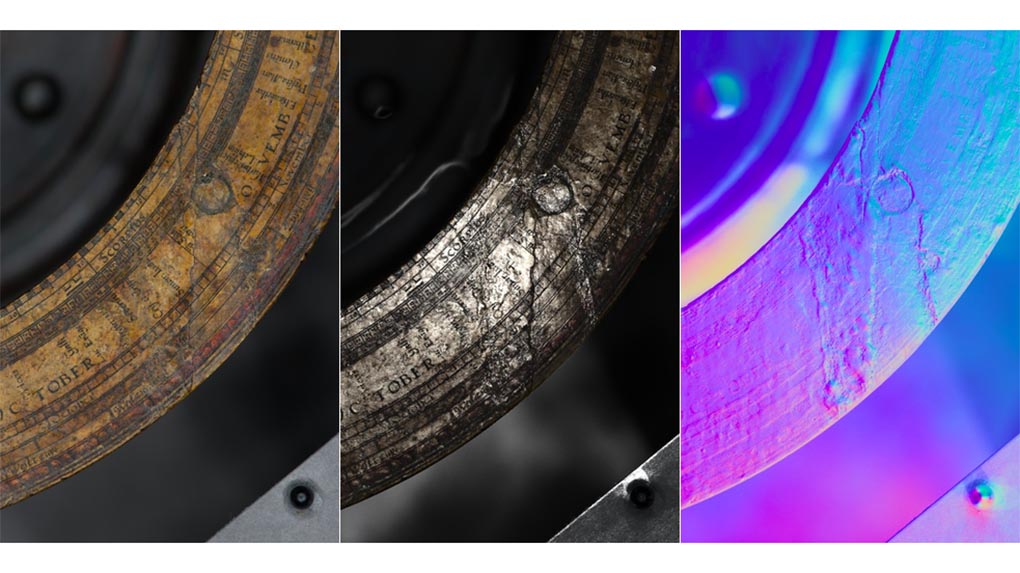
RTI model of Blaeu celestial globe: visible light, specular enhancement, normal visualisation. Images: Nick Flood & Katie Wood/ANMM.
Conclusions - layers of life (and varnish)
Viewing the globe under UV and IR radiation, as well as RTI, improved our understanding of the globe. The UV examination established the presence of more than one layer of varnish and indicated that the under-varnish there is a natural resin. Interestingly, there are a number of references to Blaeu globes from the same period that were not varnished at time of manufacture, suggesting the varnishes on this globe may not be original (McClintock and Schmidt 1995, p. 299 and Rasmussen, p.2).
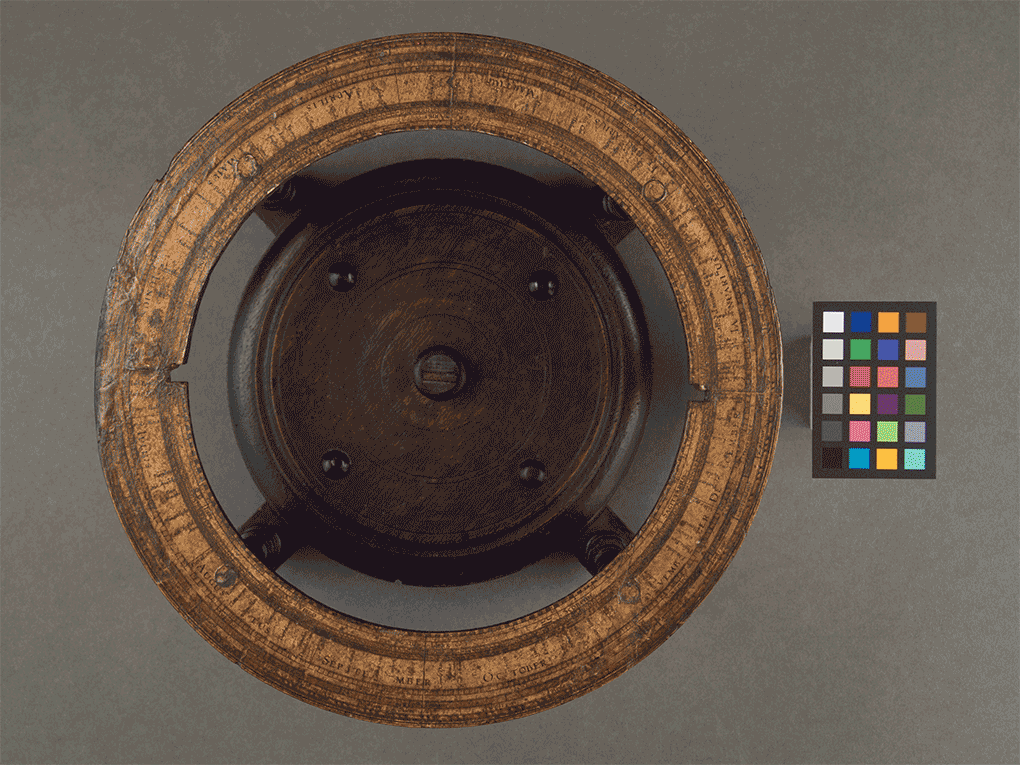
Different lighting used to study the Blaeu globe's stand and horizon band. Images: Katie Wood/ANMM.
Our tests also confirmed the presence of plaster under the paper surface as well as highlighting several areas of repair to the wooden stand. It was a pleasure to view the globe under IR examination, to see the printed images as clearly as they would have been in 1602!
It was a pleasure to view the globe under IR examination, to see the printed images as clearly as they would have been in 1602!
References
- Measday, D, Walker, C and Pemberton, B. 2017, ‘A summary of ultra-violet fluorescent materials relevant to Conservation'
- Rasmussen, 'The Restoration of a 34cm Terrestrial Globe by Blaeu'
- McClintock, T. K. and Schmidt, R. 1995, ‘The Conservation of Globes Observations in Reference to Other Fine Art and Historic Works', Internation Coronelli Society for the Study of Globes, pp. 295-303
